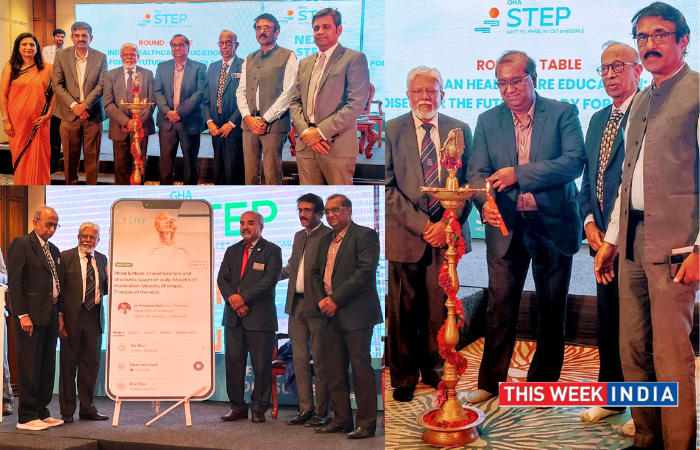INDIA, November 13, 2024: Emerging technology will transform talent across India’s key growth sectors, generating 2.73 million new tech jobs by 2028, according to new research commissioned by ServiceNow, the AI platform for business transformation. Among the world’s fastest-growing major economies, India is on track to increase its workforce from 423.73 million in 2023 to 457.62 million by 2028, reflecting a net gain of 33.89 million workers.
The research commissioned from the world’s leading learning company, Pearson, shows that the retail sector is set to lead employment growth, requiring an additional 6.96 million workers to fuel its expansion. This surge presents retail professionals with a valuable opportunity to upskill in areas like Software Application Development and Data Engineering, equipping them for a tech-driven landscape. This is followed by manufacturing (1.50 million jobs), education (0.84 million jobs), and healthcare (0.80 million jobs), propelled by expected economic growth and tech transformation.
Sumeet Mathur, Senior Vice President & Managing Director, ServiceNow India Technology & Business Center shares “AI will be a key catalyst for job creation across India’s growth engines, particularly in roles requiring advanced technical skills. This strategic emphasis will not only create more high-value opportunities for professionals but will also empower them to build enduring digital careers. Through initiatives like ‘RiseUp with ServiceNow’ and strategic partnerships with local universities and government programs, we are bridging the skills gap and empowering India’s workforce with the tools to succeed. By equipping our talent with these essential skills, we can ensure that India remains a leader in the global tech economy”
Tech job demand soars amid industry transformations
Tech-related jobs are growing across industries, with Professional, Scientific, and Technical Services, Manufacturing, and Telecommunications among the sectors poised for expansion. Leading this trend are Software Application Developers, with an expected increase of 109,700 positions. Other notable roles include Systems Software Developers (48,800 new jobs) and Data Engineers (48,500 new jobs). Web Developers, Data Analysts, and Software Testers are also on the rise, with projected additions of 48,500, 47,800, and 45,300 roles, respectively. Additionally, roles such as Data Integration Specialists, Database Architects, Data Scientists, and Computer and Information Systems Managers are expected to see increases ranging from 42,700 to 43,300 positions. Impact of emerging technologies will also be felt across industries such as energy, government services, and utilities, fueling workforce growth through technology-driven advancements.
Gen AI reshapes tech roles in IT
Key tech roles were evaluated at a task level to explore how the impact of emerging technologies differs across them. Among these, Systems Administrators will experience the largest shift, with 6.9 hours of their weekly tasks automated or augmented by emerging technologies. AI Systems Engineers will also benefit significantly from Gen AI, with half of the total tech impact on this role coming directly from AI technologies. Similarly, implementation consultants are poised to benefit significantly from the integration of Generative AI, saving 1.9 hours per week as AI takes over repetitive tasks, allowing them to focus on more strategic projects. Even the least-impacted role, Platform Owners, could save nearly half an hour each week. Emerging technologies will revolutionize roles across the tech ecosystem, enabling professionals to work smarter and faster.
Sumeet Mathur further adds “In its first 120 days of implementation of ServiceNow Gen AI, we have achieved $5M+ annualized cost takeout and an additional $4M+ in productivity across ServiceNow and with minimal technical effort. Today 30% of ServiceNow’s total AI value comes from Now Assist. We are witnessing 10% boost in weekly productivity hours, and a staggering 48% code acceptance rate. We have seen a huge impact with employee services where we have saved 62K hours in search alone and a 14% boost to employee deflection rate. At ServiceNow AI is helping us be more productive and help our customers achieve their productivity goals.”
Building a job-ready talent pipeline in India
To harness this momentum, companies and policymakers must make concerted efforts to upskill and ensure a smooth transition to a tech-enabled workforce. The ‘RiseUp with ServiceNow’ program is a global initiative focused on equipping young engineers with practical, job-ready skills, with a goal of training one million individuals in high-demand digital competencies worldwide by 2024. 97,695 Indians have gained skills on the company’s AI platform within the last 12 months. ServiceNow has also rolled out its University Academic Program, collaborating with 20 universities across 16 states, including partnerships with government bodies, FutureSkills Prime by NASSCOM, and the AICTE. Through these efforts, they have trained thousands of students, creating a pipeline of job-ready talent for the tech industry.
Research Methodology:
Faethm by Pearson’s Labour Market Insights (LMI) modelling predicts how jobs and industries will change over the next 1 to 15 years, considering the impact of emerging technologies and economic trends, assuming moderate technology adoption and expected future economic trends, including population growth. For India, the baseline of the country’s labour market is sourced from census and labour force survey data; economic growth projections are from the International Monetary Fund (IMF).
By analysing current time spent on tasks within jobs, the model identifies how emerging technologies can assist or complete these tasks, allowing humans to focus on higher value tasks. Each of the 80,000 tasks in Pearson’s ontology is assigned the most likely emerging technology to impact it, with the degree of impact varying by role, industry, and country. Combining these factors, the model provides insights into the shift at the task, job, and industry levels, offering a comprehensive view of the economy.









